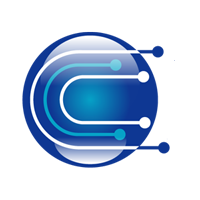Printed circuit boards that connect different components through various circuits are essential in the production of many electronic devices we use daily. PCBs come in different variations allowing them to perform under a range of circumstances. These boards are used in almost every industry and their development of has become very important. When producing PCBs, prototyping is crucial because of the many benefits that it offers. However, you need to know when to use your PCB prototypes. Here are scenarios that prototypes prove to be very useful.
Design and Quality Testing
If you want to carry out design reviews or quality testing, you should always start with prototypes before full PCB manufacturing. With the shorter processing time, you are able to start carrying out reviews or testing much sooner and this will lower your overall project costs. With a PCB prototype, you will get an accurate idea of the performance and functionality of your final product. Prototypes will also help you in confirming the performance and quality before you invest in mass production runs. As a result, you will complete your project not just sooner but cost-effectively.
**Production of New Products **
If your project involves the development of new products, then you should consider using a PCB prototype. With prototyping design engineers can easily test the anticipated function and the entire design. This means that issues can be detected early before they become more challenging and difficult to fix. Even if your project is similar to one that you have done in the past, prototyping will help in confirming the overall functionality of the product before you continue the design process. The performance of a device involves so many things and prototyping comes in handy by helping you to economically and quickly identify factors that need to be adjusted.
Complex Components
If your project involves complex or multiple structures and components, prototyping is important. Complex structures tend to be quite challenging to fix whenever problems occur. Furthermore, breaking down each function with easy prototypes can come in handy in pinpointing issues early during the design process. Your PCB manufacturing team will have an easy time figuring out the exact source of the problem. They will also have enough time to enhance the overall quality and functionality of your PCBs.
Modeling Purposes
If you are looking to present a physical design, but do not need a functioning printed board, you should use a prototype. In some cases, you may just want a model of the design to help in illustrating how it works. As a result, a fully functional board may not be necessary since you just want an accurate representation of the PCB design. When you use a prototype for your visual representation, it will be more economical that going for a standard production board.
With the ever-changing innovations and evolution of more electronic devices, printed circuit boards have become quite common. Because of the immense benefits of prototyping, PCB manufacturers and industry professionals recommend the use of prototypes to help in testing design revisions. Although you will pay for PCB prototype production the cost incurred tends to be more cost-effective and helps you to improve the quality of your products before you opt for mass production of your PCBs.



